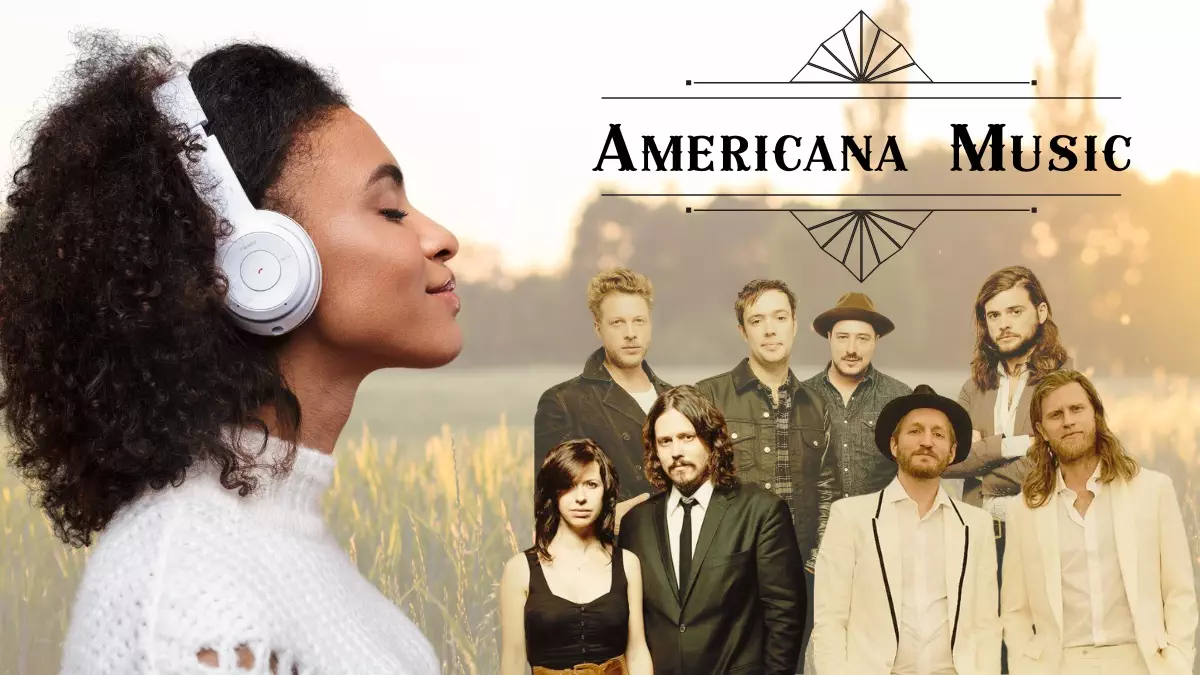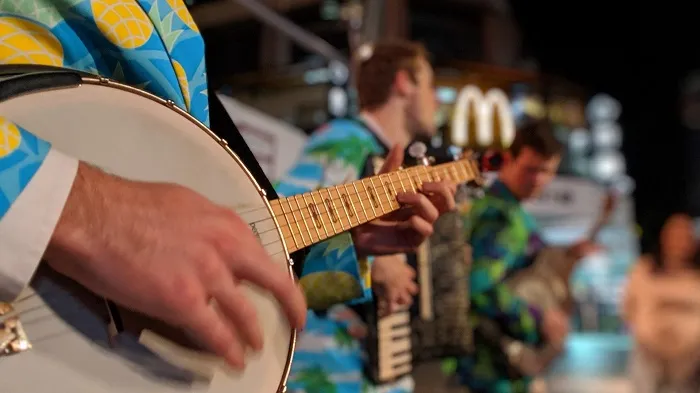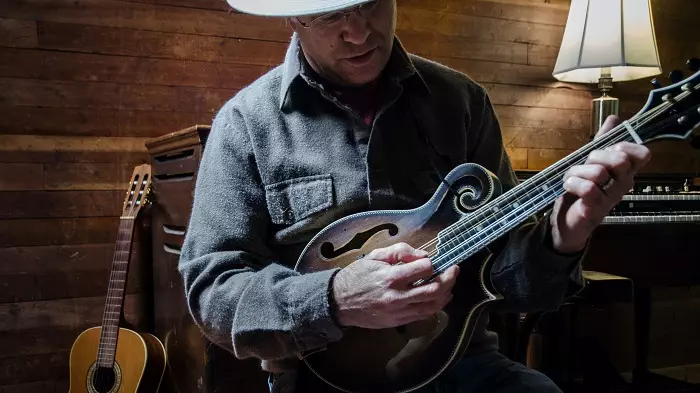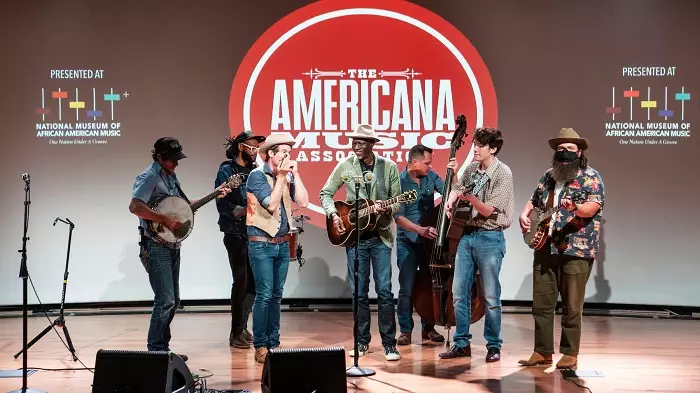What makes Americana music well-liked and popular is the fact that it encompasses a pretty large and inclusive array of music genres. It has managed to combine the old and traditional with the new and modern, making it one of the most appealing music genres.
In this post, we shed light on all you need to know about Americana music, from its origin and history to how it became a mainstream sensation rather than a just niche genre.
Understanding Americana Music
Americana music is a combination of several American genres: blues, gospel, country, bluegrass, and rock and roll.
Americana music is somewhat traditional for those coming from backgrounds of living in farms and ranches, but it’s also diverse and ever-expanding, so it also appeals to those who are into contemporary music.
What Is Americana?
Coined in 1841, the term ‘Americana’ stood for the nostalgia and longing for “The Good Old Days,” where Americans lived in small towns and cities.
This nostalgia serves as a reminder of a romanticized past that encapsulates the American Dream and culture.
Americana is this need to preserve and keep alive this idea of an idealized past. It has even led a trend that encourages collecting memorabilia and treasuring vintage items, like records and old license plates.
However, Americana isn’t just found in material objects. It can be found in anything that’s representative of American culture, including music.
What Is Americana Music?
Americana music can be quite difficult to define because it usually serves as an umbrella term for music that pulls from the traditional and contemporary American music styles.
In its strictest interpretation, Americana music is an amalgamation of American roots music, like folk, country, blues, bluegrass, and rockabilly. However, Americana music can also include roots-rock, R&B, and singer/songwriters.
According to the Americana Music Association, Americana music is “contemporary music that incorporates elements of different American roots music styles, including, roots-rock, folk, bluegrass, country R&B, and blues, resulting in a distinctive roots-oriented sound that lives in a world apart from the pure forms of the genres upon which it may draw.”
In a way, this sort of vague definition that encompasses a diverse line-up of genres makes Americana music a constantly developing niche that’s inclusive and timeless.
Origins of Americana Music
The genres that make up Americana music came about in the nineteenth and twentieth centuries. They emerged from different cultural and geographical backgrounds. This is why even though Americana music is fairly contemporary, it has a rich origin.
Folk Music
Folk music is one of the main influences on Americana music. It arose from the folk songs of the European settlers from the British Isles. These traditional songs were carried from eastern America throughout the country during the seventeenth and eighteenth centuries.
Then, in the early twentieth century, folk music went through a revival phase. Songwriters began developing their own adaptations of folk music. It continued to develop as it interacted with other cultures and music styles.
During this revival phase, artists incorporated stringed instruments like the banjo and guitars, which helped folk music gain a new sound. As a result, folk music rose to popularity and influenced numerous renowned musicians.
The most notable thing about artists at the time was their ability to capture Americana in their songwriting, which was brimming with commentary on old and new social circumstances.
Blues Music
The first commercial recordings of blues were during the 1920s and 1930s. However, blues music dates back to the tunes and songs of African Americans who worked in the fields of Southern America.
These tunes and songs spread across the Southern region, like Texas, Georgia, the two Carolinas, Mississippi, and Tennessee. Each region developed its own unique style, but the styles still carried the same soul and sound. This resulted in blues music.
Blues music was first known for its melancholic themes and somber sounds. When it became popular in the 1920s, blues artists focused on the agony that comes with loss and injustice. This association with sadness is what gave it its name.
However, blues wasn’t just concerned with tragedy; blues also centered around the triumph of overcoming adversities. This can be seen in the genre’s desire to have a wider perspective and include an array of other subjects and sentiments.
Although blues music started out with a slow tempo, it would later adapt faster tempos as it grew in popularity. This influenced the creation of other subgenres, like country blues, blues rock, and even rock and roll in the twentieth century.
Country
Country music became an official genre in the early 1920s. Its sound began as an amalgamation of European and African sounds, deriving from immigrants who resided in the Appalachians.
These various influences blended elements of folk harmonies, narrative lyrics, and stringed instruments such as the fiddle and the banjo.
Perhaps this cultural synergy is the reason why country music has been constantly evolving into different sounds and branching out into other genres. These developments are divided into six generations, each carrying its unique sounds.
Country music has had a tumultuous ride into different genres. However, there’s always been one thing that’s very clear, and that’s country music’s resilience to its core sound.
Bluegrass
In 1938, Bill Monroe formed the string band the Blue Grass Boys. The band’s musical approach was primarily influenced by old-time string bands, blues, jazz, and gospel. This style was exclusive to the Blue Grass Boys until the 1940s.
In 1947, Bluegrass became an official genre when the Stanley Brothers released “Molly and Tenbrooks,” in the manner of the Blue Grass Boys.
Bluegrass music is known for its distinctive vocal harmonies that feature two, three, or four parts. This has been referred to as the high lonesome harmony. It’s characterized by a high-pitched harmony sung over the lead vocals.
The traditional instrumentation of bluegrass music includes acoustic stringed instruments, such as the fiddle, banjo, mandolin, and acoustic guitar.
However, bluegrass has come to include other instruments, like the harmonica, piano, and drums. There are bands that have even used the electric versions of the original instruments. Nevertheless, some view this as a departure from traditional bluegrass music.
In the 1960s, bluegrass music increased in popularity when new generations started incorporating elements of pop, jazz, and rock while preserving the sound of the original Monroe sound.
Defining Characteristics of Americana Music
Even though Americana music encompasses a wide range of genres, certain traits define what an Americana song is.
Storytelling and Symbolism
The genres that make up Americana music are steeped in storytelling and symbolism.
Genres like folk and country have adopted the narrative lyrical style of European traditional songs. These originate from the old ballads of the British Isles immigrants, which narrate stories in a musical form with rhymed verses.
The immigrants used these songs to address cultural and national identity. Folk songs were also used to memorialize certain events, personal as well as historical.
As for the elements of symbolism, it is derived from blues and bluegrass music. These genres are rooted in the African American spirituals that heavily relied on symbolism. They used figurative language to capture the various social and personal tragedies and victories.
On this account, it’s without a doubt that Americana music’s lyrical content is incredibly narrative and rich in figurative language. Combining these genres under one umbrella gives us narrative lyrical content that uses symbolism to deliver raw, authentic emotions and ideas.
If there’s one thing that Americana artists agree on, it’s the authenticity that comes with their songwriting. Through storytelling and symbolism, they write lyrics about what matters to them and deliver music that resonates with their audience.
Acoustic Instruments
All of the genres that form Americana music have started out with acoustic instrumentation.
Americana combines the sounds of the traditional fiddle, mandolin, acoustic guitars, and even ukuleles. With the different unique styles of fingerpicking, Americana artists produce music that captures the audiences’ hearts and emotions.
As the genres progressed and Americana started to become even more inclusive, Americana artists started introducing electric instruments.
History of Americana Music
Americana started out as a term that radio shows used to refer to any music that falls under country, folk, blues, and bluegrass music.
However, in the late 1990s, music-industry executives took it upon themselves to create a space for these genres—thus, the creation of Americana music.
A Radio Format
In 1984, Mark Humphery hosted “Honky Tonk Amnesia,” a weekly radio show on KCSN—a country music station in Northridge, California. Humphery played a diverse line-up of genres, including honky-tonk, country, blues, fold, old-time music, dawg, and cajun.
Honky Tonk Amnesia was advertised on KCSN as Americana. This was the start of Americana as a radio format. In the 1990s, radio shows and music industry executives coined the term “Americana” to refer to rural, traditional music known for its finger-plucked guitars and gnarly, gruff voices.
It wasn’t until the creation of the Americana Music Association that the term “Americana” was used to refer to a music genre.
The Americana Music Association
During the late 1990s, away on a retreat in Austin, Texas, to attend the South by Southwest music conference, a group of about 30 music industry executives unofficially met to discuss the future of Americana music.
These executives discussed the prospect of joining hands to establish a place for the Americana community within the music industry. Moreover, they debated the likelihood of a trade association. This all came true in October 1999.
The following year, the Americana Music Association joined the South by Southwest conference. Then, in September 2000, it organized its first convention in downtown Nashville.
By its third year, the AMA added the Americana Honors and Awards. Over the years, the convention attracted fans and industry executives alike, which the association responded to by changing the convention’s name to Americana Music Festival and Conference.
By 2008, the convention had gained exponential popularity that there were over 12,000 people attending the nighttime showcases. The AMA had to expand the event from one night to four days.
Since the establishment of the Americana Music Association, Americana music has been able to find a place within the industry. “What began as an informal gathering of dedicated colleagues has grown into a movement endorsed by major media and iconic artists.”
In 2009, the Recording Academy added “Best Americana Album” as an official category in their award show, and the term Americana was added to the Merriam-Webster dictionary in 2011.
Nevertheless, the AMA hasn’t been just about finding a place in the music industry. It became a sanctuary for artists that don’t necessarily fit in the stream of popular music.
The Americana Music Festival and Conference has been a host for incredibly diverse line-ups of Americana artists. This wide array of artists are an embodiment of Americana.
Bob Dylan
It’s impossible to mention every single artist and musician that has contributed to the creation and development of the all-encompassing Americana music. If we were to name one artist that had the most notable impact, however, we’d have to say, Bob Dylan.
Bob Dylan left his mark in the 1960s for his American folk music revival, and today, he’s viewed as one of the best musical artists of all time.
John Prine
If Bob Dylan revived folk music and paved the way for Americana, John Prine is the person who popularized it.
John Prine’s music was always elusive when it came to categorizing it under a specific genre. Some referred to it as folk, and some called it country. For the longest time, his music didn’t really fit in under one genre. That’s true Americana, right?
In an interview, John Prine said he wasn’t necessarily trying to “fall into a particular slot.” That freedom in artistry is what made John Prine one of the most successful Americana artists.
Americana Music Today
Despite the fact that it began as a radio format, Americana music has become one of the biggest genres today.
As of the 2010s, bands like Mumford & Sons, The Lumineers, The Civil Wars, and The Avett Brothers have dominated the charts in the United States. This has made Americana music a part of the popular crowd, rather than an exclusive niche.
What started out as a corner of the Nashville music scene has now become a staple in mainstream charts, recognized as a legitimate music style. Americana is creating spaces for cross-genre collaborations.
















1 comment
You guys mentioned some influential artists and bands (Bob Dylan, John Prine, Mumford & Sons, Civil Wars, etc.) What are some influential women that helped create the genre?